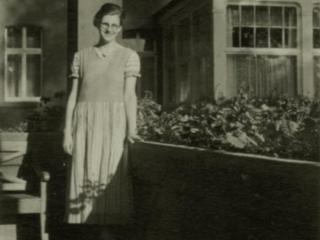 For decades after she died, at just 24, no one really spoke about Anna Lehnkering.
For decades after she died, at just 24, no one really spoke about Anna Lehnkering.
According to her death certificate, Lehnkering, who once dreamed of working in a nursery, died of peritonitis.
But she didn’t really, she was gassed, one of tens of thousands of people killed by the Nazis during their « Aktion T4 » project.
The project targeted disabled and ill people, considered by the Nazis as unworthy, and killed about 70,000 at six sites in German-controlled territory between January 1940 and August 1941.
It was, in essence, a trial run for the Holocaust.
« It became the model for the mass murder that would follow in the Nazi extermination camps, » said German parliament speaker Norbert Lammert at a ceremony on Friday to mark International Holocaust Memorial Day.
This year marks the 75th anniversary of the Wannsee Conference, where Nazi officials discussed the implementation of the « final solution », but ceremony on Friday paid special tribute to those who were already dying in gas chambers.
In fact, by the time of the Wannsee Conference they were no longer gassing the disabled and ill. But the public outcry which forced the Nazis to stop in 1941 was not enough to save millions from death over the next four years.
Many people with disabilities and mental health problems were left to starve, die of neglect, or given deliberate overdoses, their cries for help unheard.
Three years after Lehnkering’s death, Ernst Putzki wrote to his mother describing the inhumane conditions at the institution where he was being held in Weilmuenster, western Germany.
« Death from starvation is hard on our heels and no one knows who will be next, » he wrote.
« Before, the people here were killed more quickly and their bodies were taken for burning at dawn. But this was met with resistance from the locals.
« So now we are simply left to starve. »
The letter, which was read out by actor Sebastian Urbanski, who has Down’s syndrome, during Friday’s ceremony of remembrance, never reached Putzki’s mother.
Ernst survived another two years, dying in January 1945 of pneumonia, according to his death certificate.
People like Lehnkering and Putzki are often seen as the forgotten victims of the Nazis’ murderous regime, which would go on to murder six million people – mainly Jews, but also Roma, political prisoners and others – in its death camps.
Sigrid Falkenstein, Lehnkering’s niece, had no idea her aunt was among the 300,000 disabled or ill people estimated to have been killed by the Nazis until she stumbled across her name on a list in 2003.
« In my family, we never talked about my aunt, » Falkenstein told German news agency Deutsche Welle. « I now know that many families were and still are caught in a vicious circle of repression, silence and taboos.
« For a long time, victims, survivors and their families were stigmatised in both West and East Germany. »
Sigrid was determined not to let her aunt be forgotten, and painstakingly uncovered the story of her life to ensure no one forgot who Anna was, and why she died.
On Friday, there were calls for all the victims to be named.
After all, said Mr Lammert, it is only through the their stories that « it is possible to really understand the evil that was done to these innocent people » – and by telling them once again, « we restore their dignity ».






